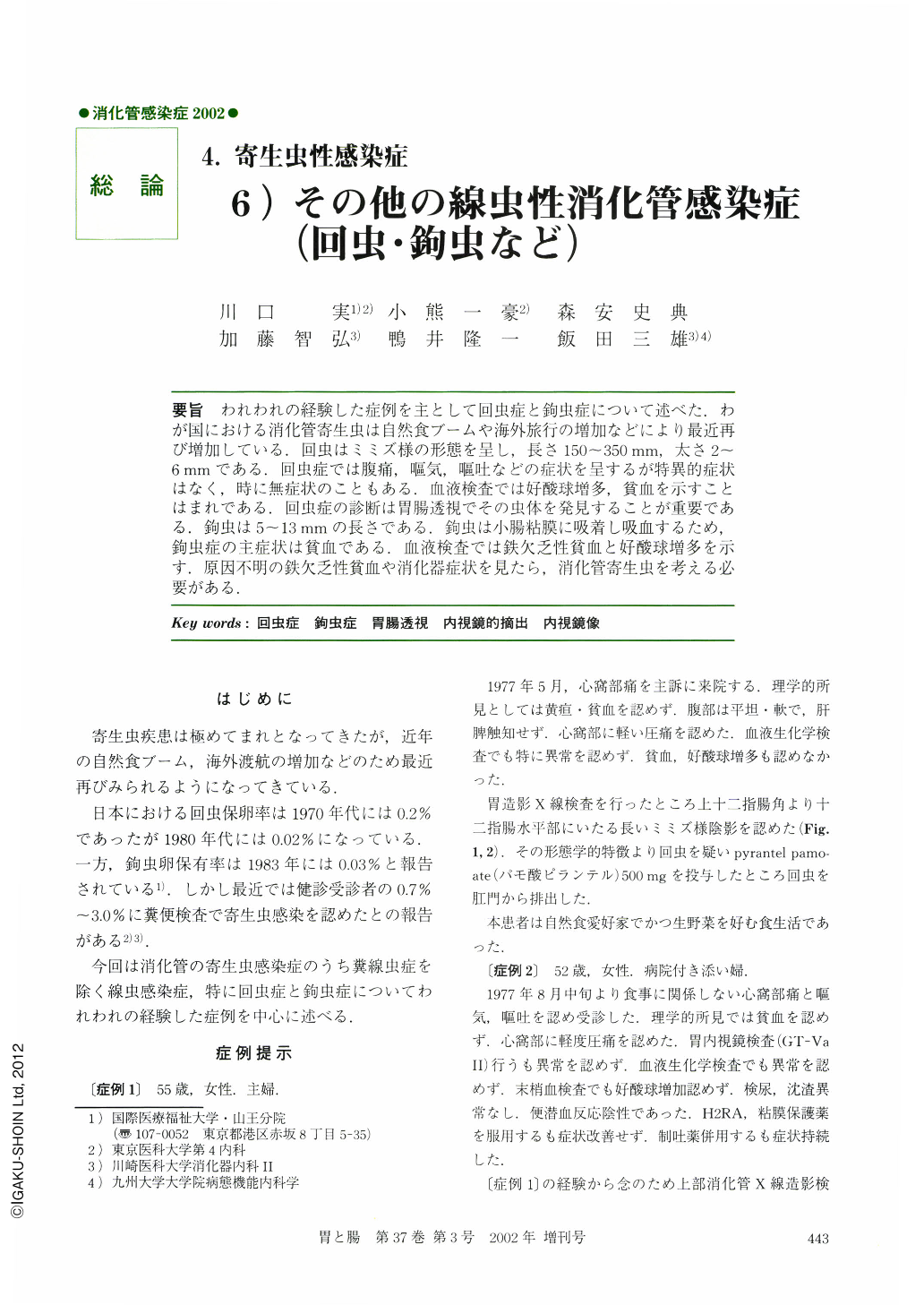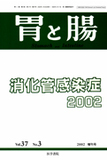Japanese
English
- 有料閲覧
- Abstract 文献概要
- 1ページ目 Look Inside
- サイト内被引用 Cited by
要旨 われわれの経験した症例を主として回虫症と鉤虫症について述べた.わが国における消化管寄生虫は自然食ブームや海外旅行の増加などにより最近再び増加している.回虫はミミズ様の形態を呈し,長さ150~350mm,太さ2~6mmである.回虫症では腹痛,嘔気,嘔吐などの症状を呈するが特異的症状はなく,時に無症状のこともある.血液検査では好酸球増多,貧血を示すことはまれである,回虫症の診断は胃腸透視でその虫体を発見することが重要である.鉤虫は5~13mmの長さである.鉤虫は小腸粘膜に吸着し吸血するため,鉤虫症の主症状は貧血である.血液検査では鉄欠乏性貧血と好酸球増多を示す.原因不明の鉄欠乏性貧血や消化器症状を見たら,消化管寄生虫を考える必要がある.
This paper reports our experience of parasitosis mainly due to roundworm (Ascaris lumbricoides) and hookworm (Ancylostoma). Intestinal parasitosis is increasing again in Japan in recent years due to the natural food boom and increases in the number of overseas travelers. A roundworm is like an earthworm and measures 150~350 mm in length and 2~6 mm in thickness. Ascariasis (roundworm disease) is often associated with symptoms such as abdominal pain, nausea and vomiting, but no specific symptom has been reported and it is sometimes asymptomatic. Hematological examinations show eosinophilia and anemia on rare occasions. The diagnosis is confirmed when the worm is discovered in GI fluoroscopy as a filling defect.
A hookworm measures 5 ~ 13 mm in length. It adheres to the small intestinal mucosa and sucks blood. The major symptom of ancylostomiasis is anemia due to blood sucking. Hematological examinations often show evidence of iron-deficiency anemia and eosinophilia. Parasitosis should be suspected in the presence of GI symptoms of unknown etiology or irondeficiency anemia.

Copyright © 2002, Igaku-Shoin Ltd. All rights reserved.


